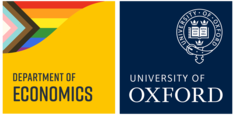The development of a simple framework with optimizing agents and nominal rigidities is the point of departure for the analysis of three questions about fiscal and monetary policies in an open economy.
The first question concerns the optimal monetary policy targets in a world with trade and financial links. In the baseline model, the optimal cooperative monetary policy is fully inward-looking and seeks to stabilize a combination of domestic inflation and output gap. The equivalence with the closed economy case, however, ends if countries do not cooperate, if firms price goods in the currency of the market of destination, and if international financial markets are incomplete. In these cases, external variables that capture international misalignments relative to the first best become relevant policy targets.
The second question is about the empirical evidence on the international transmission of government spending shocks. In response to a positive innovation, the real exchange rate depreciates and the trade balance deteriorates. Standard open economy models struggle to match this evidence. Non-standard consumption preferences and a detailed fiscal adjustment process constitute two ways to address the puzzle.
The third question deals with the trade-offs associated with an active use of fiscal policy for stabilization purposes in a currency union. The optimal policy assignment mandates the monetary authority to stabilize union-wide aggregates and the national fiscal authorities to respond to country-specific shocks. Permanent changes of government debt allow to smooth the distortionary effects of volatile taxes. Clear and credible fiscal rules may be able to strike the appropriate balance between stabilization objectives and moral hazard issues.
fiscal policy
,currency union
,open economy
,exchange rates
,monetary policy


